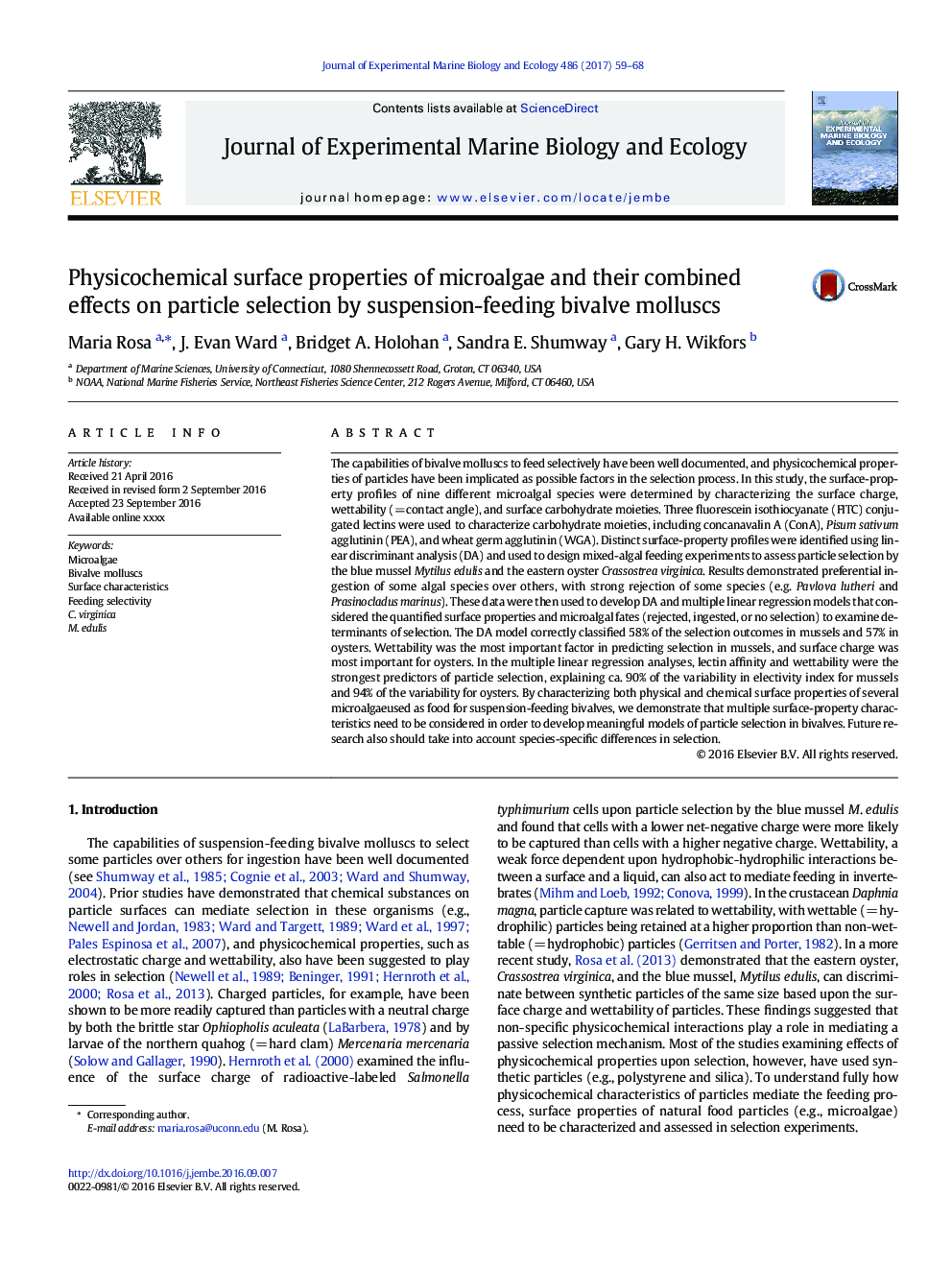| Article ID | Journal | Published Year | Pages | File Type |
|---|---|---|---|---|
| 4395166 | Journal of Experimental Marine Biology and Ecology | 2017 | 10 Pages |
•Surface properties of microalgae were characterized and used to develop particle selection assays for mussels and oysters•Results were modeled with microalgal surface characteristics to determine important predictors of particle selection•A discriminant analysis predicted selection 58% of the time in mussels, and 57% in oysters•Multiple regressions demonstrated microalgal-lectin affinity and wettability were the strongest predictors of selection•Regression models explained ca. 90% of the variability in electivity index for mussels and 94% for oysters
The capabilities of bivalve molluscs to feed selectively have been well documented, and physicochemical properties of particles have been implicated as possible factors in the selection process. In this study, the surface-property profiles of nine different microalgal species were determined by characterizing the surface charge, wettability (= contact angle), and surface carbohydrate moieties. Three fluorescein isothiocyanate (FITC) conjugated lectins were used to characterize carbohydrate moieties, including concanavalin A (ConA), Pisum sativum agglutinin (PEA), and wheat germ agglutinin (WGA). Distinct surface-property profiles were identified using linear discriminant analysis (DA) and used to design mixed-algal feeding experiments to assess particle selection by the blue mussel Mytilus edulis and the eastern oyster Crassostrea virginica. Results demonstrated preferential ingestion of some algal species over others, with strong rejection of some species (e.g. Pavlova lutheri and Prasinocladus marinus). These data were then used to develop DA and multiple linear regression models that considered the quantified surface properties and microalgal fates (rejected, ingested, or no selection) to examine determinants of selection. The DA model correctly classified 58% of the selection outcomes in mussels and 57% in oysters. Wettability was the most important factor in predicting selection in mussels, and surface charge was most important for oysters. In the multiple linear regression analyses, lectin affinity and wettability were the strongest predictors of particle selection, explaining ca. 90% of the variability in electivity index for mussels and 94% of the variability for oysters. By characterizing both physical and chemical surface properties of several microalgaeused as food for suspension-feeding bivalves, we demonstrate that multiple surface-property characteristics need to be considered in order to develop meaningful models of particle selection in bivalves. Future research also should take into account species-specific differences in selection.
